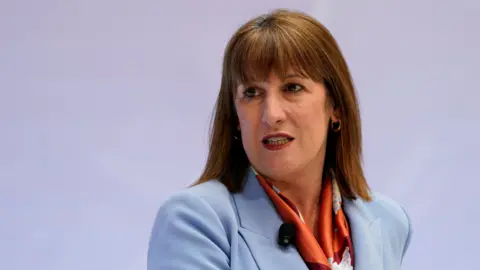In the current financial landscape of the United Kingdom, Chancellor Rachel Reeves is facing a significant challenge as she seeks to navigate the government’s fiscal policies amidst growing economic pressures. Following some controversial decisions around welfare reforms, the planned cut of billions in welfare costs has come under scrutiny. The anticipated savings of approximately £5 billion by 2029-30 have been undermined due to major governmental missteps, including a U-turn on critical issues like the Winter Fuel Allowance. This shift has led to a drastic reduction in the buffer initially envisioned to support public finances, raising urgent questions about Reeves’ next steps.
As the Autumn Budget looms, Reeves finds herself at a crossroads, with five potential strategies laid out to address the situation. Each of these options carries distinct implications and risks for the UK economy.
The first option is to adopt a “wait and see” approach regarding the performance of the UK economy. Should the economy grow at a pace that surpasses expectations, there may be a decrease in debt interest payments. Nonetheless, this strategy is fraught with uncertainty. The Office for Budget Responsibility (OBR) recently halved its growth forecast for the year down to just 1%, reflecting a cautious outlook shaped by external factors, such as the recently negotiated tariffs under President Donald Trump’s administration. While these new arrangements have indeed reduced some tariffs, crucial unresolved issues still linger, risking further economic instability.
The second alternative involves identifying new savings within the current budget framework. This option is particularly complicated given the recent announcement of a Spending Review that saw the NHS receiving an additional £30 billion annually and defense allocations being bolstered. However, requiring other departments to identify further cuts after ostensibly finalizing their budgets could be chaotic and signal governmental weakness; it may distract from the credibility Reeves is trying to restore. Moreover, whether the government can afford to uplift the two-child benefit cap—the subject of debate among political leaders—remains to be seen, indicating the complexity of fiscal management at this juncture.
Reeves’ third choice is to consider modifying existing financial rules. Upon her ascension to the Chancellor role, she pledged to uphold strict fiscal guidelines, asserting that day-to-day government spending must be funded through revenue and that debt should be on a downward trajectory as a proportion of national income. Altering these self-imposed rules would not only go against her stated principles but could also destabilize market confidence, leading to increased debt servicing costs.
Another avenue proposed is to limit the frequency of economic assessments conducted by the OBR. The IMF has suggested consolidating these evaluations to an annual cycle to promote stability and mitigate pressure on the government’s financial buffer. By restricting assessments, the government could potentially streamline its reporting requirements. However, the recent history of previous administrations, notably the handling of unfunded tax cuts under former Prime Minister Liz Truss, casts a long shadow, which Reeves must navigate delicately.
Lastly, Reeves may consider options to increase tax revenue, albeit with constraints. The Labour government has committed not to raise taxes for working individuals, thereby eliminating increases in key areas like Income Tax or National Insurance. A feasible option might be to extend the freeze on tax thresholds, originally set to terminate in April 2028. This would potentially generate about £7 billion in additional revenue while posing challenges to constituents who could find themselves pushed into higher tax brackets when their earnings increase.
Ultimately, Reeves is presented with a complicated landscape intertwined with economic, social, and political ramifications. Each option holds the potential to impact working Britons profoundly while addressing the pressing financial pressures facing the government. As such, the Chancellor must weigh each alternative carefully while considering both short-term feasibility and long-term economic health. The path she chooses could redefine fiscal policy and governance in the UK, making the upcoming months critical for the future of the country’s economy.











